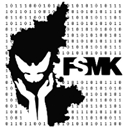Last weekend, CMRIT GLUG along with IBM and FSMK conducted a 2 day workshop, “FOSS for Budding Developers”. This workshop was completely technical in nature and among the many FOSS workshops that I have attended, one of the most useful one for me. The professionalism of IBMers could be seen during the workshop which was also the main reason for the huge success of this workshop.
The workshop covered the following topics,
Day 1
Day 2
I was interested in Linux Kernel Developement and the Linux Test Project sessions. I had taken my laptop to make the best use of the workshop.
I have been using GNU/Linux since last 2 years, but never did I get the courage to compile and build the Linux kernel. Only around 6 months back, I had for the first time with help of Naresh, installed the new linux kernel on my system using apt-get. The main reason for not trying out building my own linux kernel was that I was afraid that I would loose all the data I had in my system. However for the workshop I had decided that I will try it out. So when the Linux Kernel session started, I was very excited.
In the pre-lunch session, we were introduced to various tools that any Hacker would require while trying to read the source code or build from source code. We were introduced to gcc, gdb, make, makefiles, strace,ltrace and cscope tools. Though I knew little about gcc and gdb, I realized the importance of the other tools. I particularly was marveled by “cscope” and “strace”. Optimized use of cscope will surely decrease the time taken to go through the source code for any developer. I remember it had taken me around 2 months just to go through the Evolution source code. If I had used cscope then, it would hardly take me 2-3 days for the same. We were given a very brief introduction to cscope during the session, but I will learn more about it myself and write about it in the near future.
The pre-lunch session thus prepared the ground for us to venture in to building the linux kernel.
Post-lunch we started with Building the Linux Kernel 2.6.33.2 version. I was amazed by the simplicity involved in building the kernel. It is just a 7 step procedure, if you are building the kernel for your own desktop or laptop.
It took around half an hour to execute. After this I just need to update my grub if it has not been done by the above steps already. Just confirm it by having a look at /boot/grub/grub.cfg. If the new kernel lines are added then you are ready to Reboot and use the new kernel which was just built.
Thats all.
After booting into the new kernel, we started writing simple codes for new kernel modules and drivers. Again the simplicity of writing a new module or driver and loading it amazed me. However a lot more has to be explored and I will definitely try them in future.
On day 2, I attended the Linux Testing Project workshop. It was again wonderfully planned by the IBM team. We were first given a brief introduction to the history and importance of the Linux Testing Project with the team making it very clear that the testing cycle is as important as the development cycle. After this we had a hands on session.
In the hands on session, we started with building the Linux Testing Project in our systems. Than the IBM team had come with some tasks for us. We were asked to run a test case which was written such that it fails intentionally. This was done so that we could study the test case and come up with a solution as to why that particular test case was failing. I had teamed up with Saket and together we were very close to finding the solution. It was quite fun and really a good Hacker workshop.
There were many interesting points that we noted while trying the Linux Testing Project. One among them was, I was using Linux Kernel 2.6.31.x where as Saket was using Linux Kernel 2.6.33.2. So when we executed the Containers Testcases on our systems we found that some test passed successfully in my system but failed in Saket’s system. This clearly showed us that Linux Kernel 2.6.33.2 had some bugs. We did not dig into the matter due to lack of time. However I need to check it soon.
I have skipped lot of technical details here as I will give the technical details later when I try it again myself.

